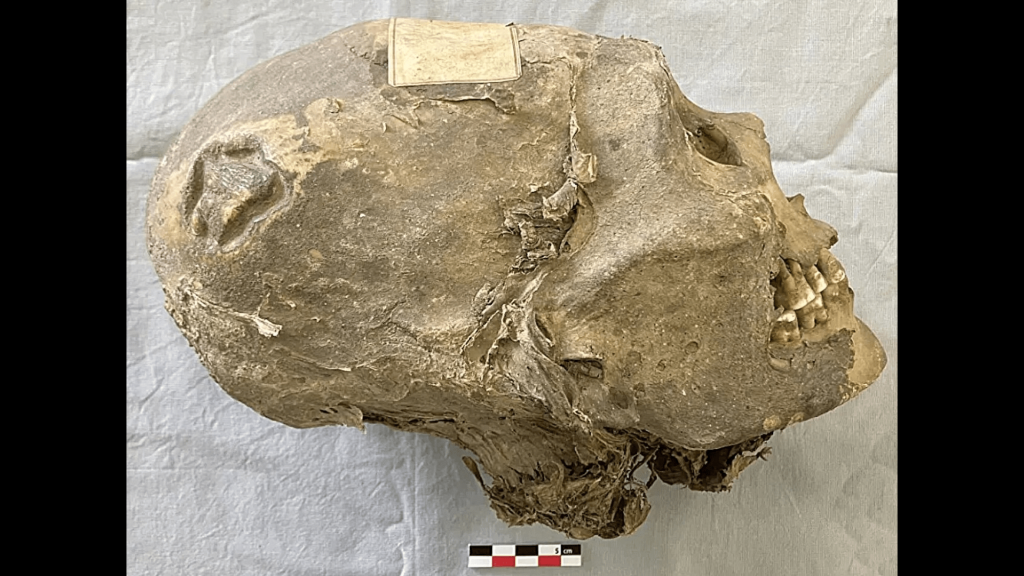While re-evaluating a centuries’ old, elongated skull originally theorized to belong to an Incan “tribal chief,” a team of archaeologists in Switzerland came across a startling discovery. The mummified cranium instead likely belonged to a respected member of a separate indigenous community that lived as subjects within the Incan empire. Their findings are published in the International Journal of Osteoarchaeology and are now helping recontextualize the remains while also addressing the field’s longstanding ethical issues.
Older archaeological collections often contain complicated, uncomfortable historical truths. While still an issue today, archaeology’s earliest years were even further plagued by countless examples of unethical excavations, cultural biases, and outright theft. One such example dating back to 1876 involved dozens of human remains and artifacts recovered in South America.
After emigrating to Chile, Swiss entrepreneur Louis Kuffré began amassing and donating various archaeological finds to his hometown’s museum, including an artificially elongated skull labeled “No. 10.” According to Kuffré’s label, the well-preserved head belonged to “an Inca from Bolivia” found at an “Indian ruin in the plain of the Cordilleras at the foot of Mount Illimani at 12,900 feet of altitude.” Kuffré further claimed the individual’s burial circumstances suggested he was a “tribal chief.”
However, researchers led by study co-author Claudine Abegg believe the cranium (now known as I Y-001) tells a very different story. After careful review of the evidence, the team contends the label’s original reference to the “Indian ruin” likely refers to a burial tower called a “chullpa.” These structures were constructed by the Aymara people around Lake Titicaca at the present-day border between Peru and Bolivia. Although the Aymara eventually became part of the Incan empire around the 16th century CE, they continued to practice distinct cultural traditions—notably skull elongation. And while their chullpas usually housed people of higher social status, they didn’t always contain local chiefs.
A sizable surgical incision also shows that the man likely underwent an attempted trepanation, a procedure in which a hole is created in the skull to alleviate issues like cranial swelling or external injuries. The trepanation was not completed, but signs of healing suggest the man continued living for at least some time after the medical treatment—despite also nursing a significant tooth abscess.
Radiocarbon dating would have been extremely damaging to the skull, so the archaeologists instead relied on historical context clues to estimate its age. Records indicate that skull elongation was formally banned by Viceroy Francisco de Toledo between 1572 and 1575, while the last documented example occurred during the mid-17th century. Because of this, Abegg’s team confidently believes the man lived at least 350 years ago.
This skull is only one of the many examples of archaeological remains that deserve a fresh look as experts continue to reckon with centuries of problematic excavations.
“It requires that one set aside their own perspective on death and the ‘right’ treatment of human remains, which is a matter of ethics and changes from person to person, from culture to culture,” Abegg said in a statement. “While it is easy to say, objectively considering one’s own biases on any given subject and bypassing them is not easy on a daily basis.”

